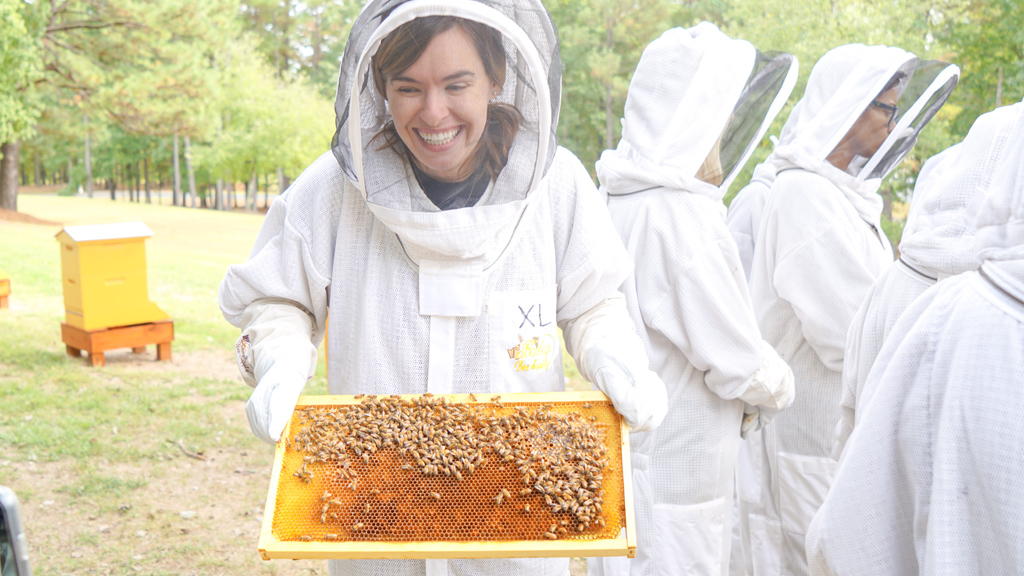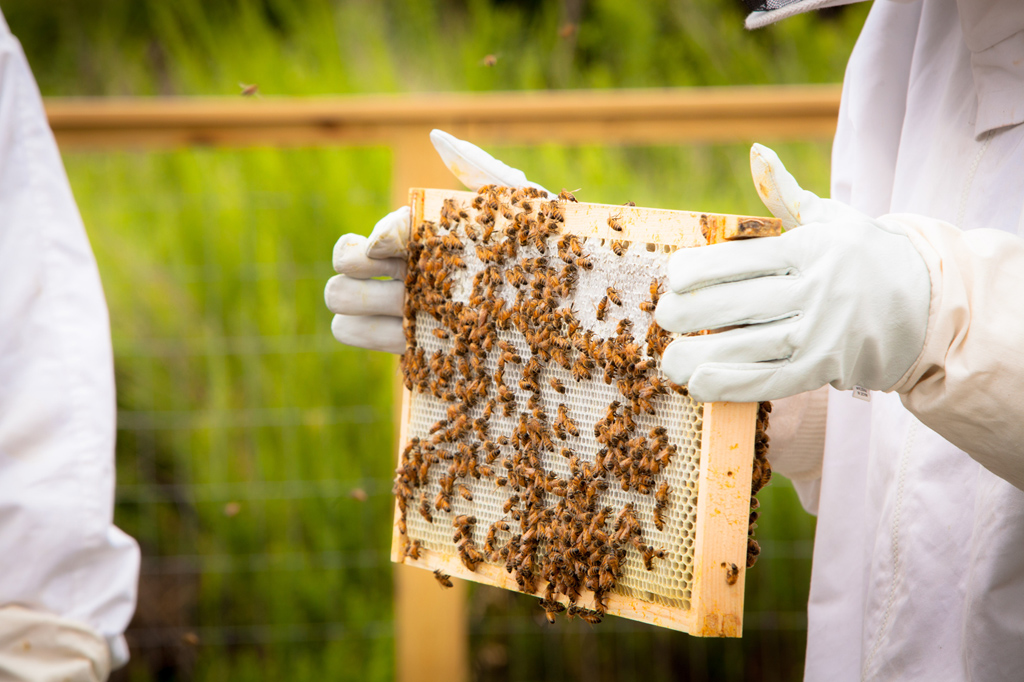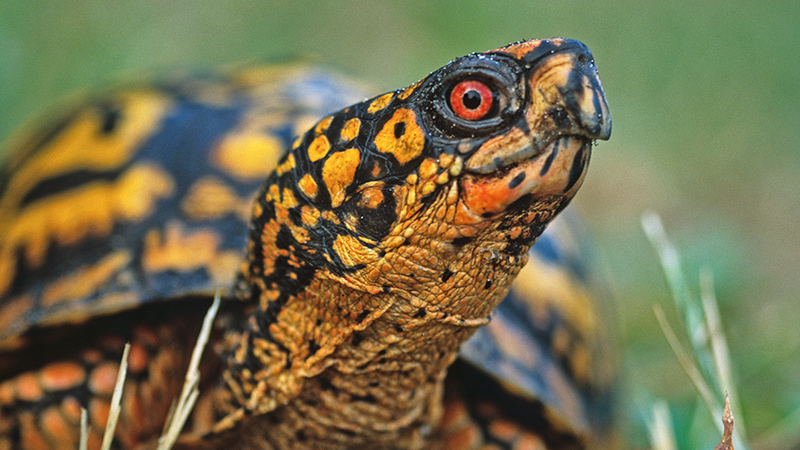Cisco’s first high-profile conservation project was protecting endangered rhinos. Today, the company protects elephants, sharks, turtles and even bees, among other species. The initiatives dot the globe, from Africa to Australia to India to the U.S.
This World Wildlife Day, Cisco’s conservation work takes on special meaning in the face of looming mass extinctions wrought by climate change, habitat loss, poaching and poverty. According to a 2019 United Nations report, roughly 1 million of the planet’s estimated 8 million species are at risk of extinction. Many will vanish within a matter of decades.
The work with rhinos started in 2015 when Cisco joined forces with Dimension Data (now NTT Ltd) to help prevent poaching at a private game reserve in South Africa. A key innovation of that pilot program was a digital perimeter to prevent poachers from encroaching on protected areas.
Today, the number of projects in Africa has expanded to five, including one in Zambia’s Kafue National Park and another in Kenya’s Ol Pejeta Conservancy. In each case, the technology is tailored to the particulars of the location—for example, the Kafue project centers on a lake. Common denominators of Cisco’s contribution are networking and Internet of Things (IoT) technology, including Wi-Fi and networks that specialize in carrying data over vast distances and low bandwidth (known as LoRaWAN networks).
The number of partners has also expanded, key among them being World Wildlife Fund (WWF) and FLIR. FLIR makes the thermal imaging cameras that sit on Cisco’s networking technology and act as IoT sensors, alerting rangers to the presence of poachers, illegal fishermen and others.
“We wanted to see if Cisco technology could help address one of our big initiatives around anti-poaching,” says Afsoon Namini, who directs private sector engagement at World Wildlife Fund and manages the partnership with Cisco. “We wanted to ensure rangers were alerted if something unusual was happening, particularly in the evenings.”
It’s not just rhinos and elephants that benefit from the protection. Add to the list other park dwellers such as lions, leopards, buffalo and pangolins—scaly anteater-like creatures that are among the most trafficked animals in the world.
Sustainable Impact
Cisco’s conservation efforts are a pillar of its broader Sustainable Impact program. Driven by Cisco’s engineering organization, the program aims to tackle global sustainability problems. A main goal is protecting global biodiversity.
“We wanted to focus on quality, not quantity,” says Cayla Yang, partnership and engagement lead for the Sustainable Impact program. “We wanted to gather metrics before going forward.”
The metrics tell a success story. For example, the rhino-protection project in South Africa reduced poaching incidents by 96 percent. (It’s also the subject of a National Geographic documentary titled Save This Rhino—watch the trailer here.) And the project in Zambia allowed rangers to apprehend far more—as in 260 percent more—illegal boats and contraband than in the past.
New Marine Projects
Far from the scorching plains of Africa, Cisco is currently filming its second documentary, Save This Shark. Slated for release this summer, the film features Mick Fanning—the surfer who famously survived a run-in with a Great White.
The company is also working with leading shark experts at universities in Miami and Australia to monitor the migration patterns of Great Whites. Tracking these apex species offers insights into marine ecosystems as well as the impacts of climate change on ocean temperatures. It can also help cut down on human-animal conflicts—a theme that runs throughout Cisco’s conservation efforts to date.
The Missing Bee Link


Credit: Bee Downtown
From the mighty elephant and rhino to the humble bumblebee, Cisco’s conservation work runs the gamut. Next to its RTP campus in North Carolina, Cisco has partnered with Bee Downtown to install and maintain three honeybee hives. The goal: to support the state’s growing pollinator population, educate people about the plight of bees and provide the missing link in a 55-mile “bee highway”—the largest pollinator corridor in the country.
According to Greenpeace, one-third of all food produced globally is pollinator dependent, but wild honeybee populations are threatened by insecticide use, parasites and monoculture farming.
“We want to build out Connected Bees as a lighthouse program for Cisco from a conservation and environmental perspective,” says Cécile Willems, director of Global Public and Private Sector Marketing at RTP.
A grand opening of the new beehives is scheduled for April.
Why Did the Turtle Cross the Road?

Answer: to nest. At least that’s the case at Cisco’s Boxborough campus in Massachusetts. Turtles there live on one side of a road and migrate to the other to give birth to their young. That’s why Cisco has built three turtle tunnels under the road on the campus.
These are not just any turtles. When Cisco bought the property 20 years ago, it inherited habitat for the endangered Blanding’s Turtle and the threatened Eastern Box Turtle.
To help the turtles survive, if not thrive, Cisco has set up two conservation areas of 49 and 60 acres. The company has also spruced up 16 acres of turtle nesting habitat and is funding a monitoring plan and Blanding’s Turtle conservation research project, among other efforts.
Just Getting Started
Cisco’s conservation push is just getting started. Plans are afoot for a second project in Kafue National Park, a rhino documentary in India, and projects in Indonesia and Mozambique.
Namini says WWF and Cisco have been brainstorming new applications of Cisco technology to address other conservation challenges. Possible focus areas include forests, rivers, oceans and other wildlife species, with use cases ranging from illegal fisheries to the plight of endangered black-footed ferrets in the northern Great Plains.
“It’s not a one-trick pony,” Namini says.
A plus for Cisco: the conservation efforts are also a draw when hiring and retaining talent. According to a survey in Fast Company, more than 70 percent of respondents said they were more likely to choose to work at a company with a strong environmental agenda. And nearly 40 percent of millennials surveyed said they’d chosen a job in the past because the company performed better on sustainability than the alternative.
###
We welcome the re-use, republication, and distribution of "The Network" content. Please credit us with the following information: Used with the permission of http://thenetwork.cisco.com/.




